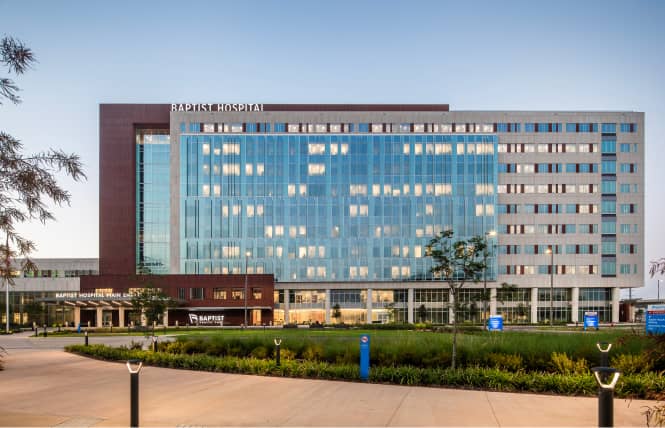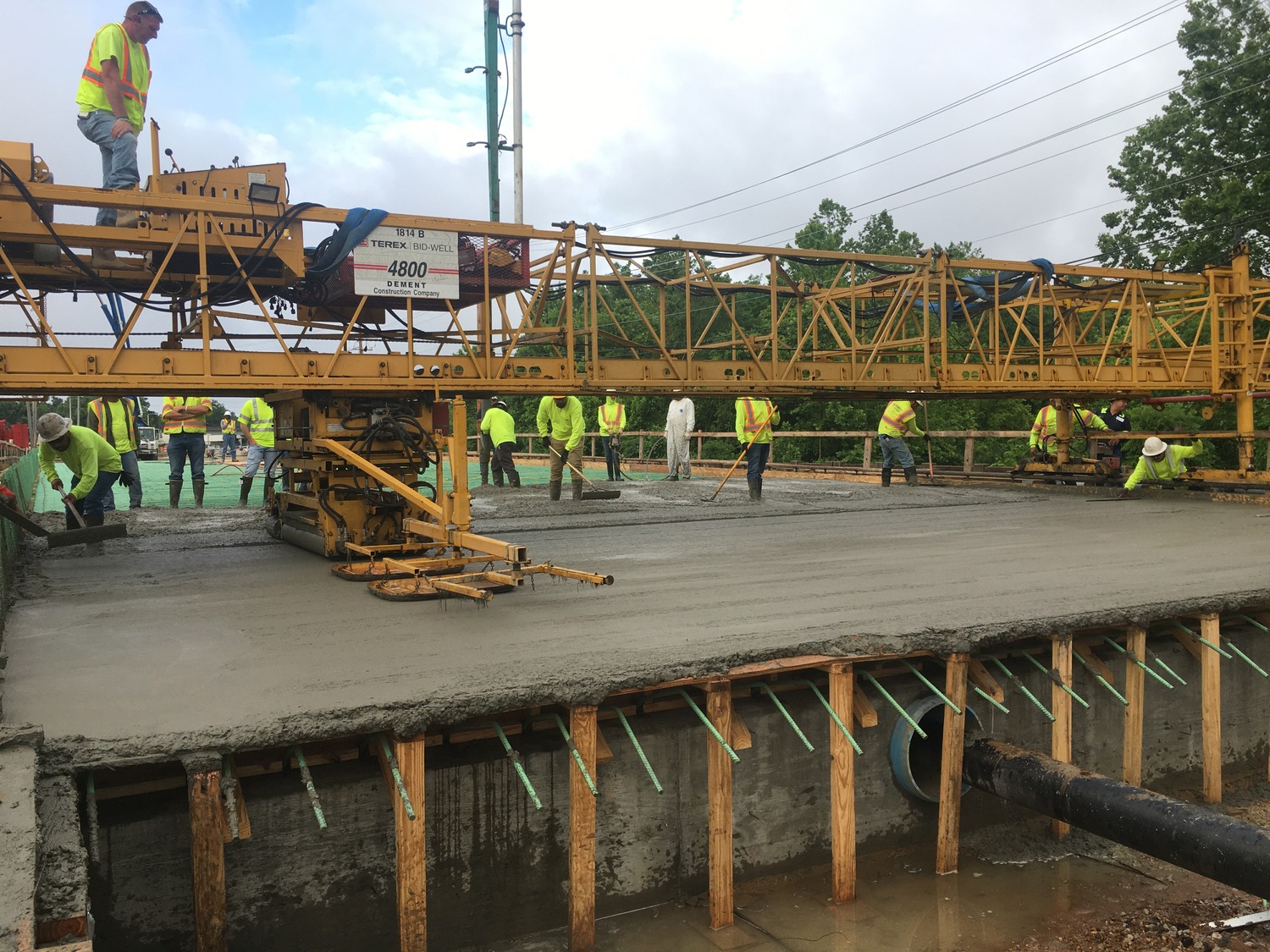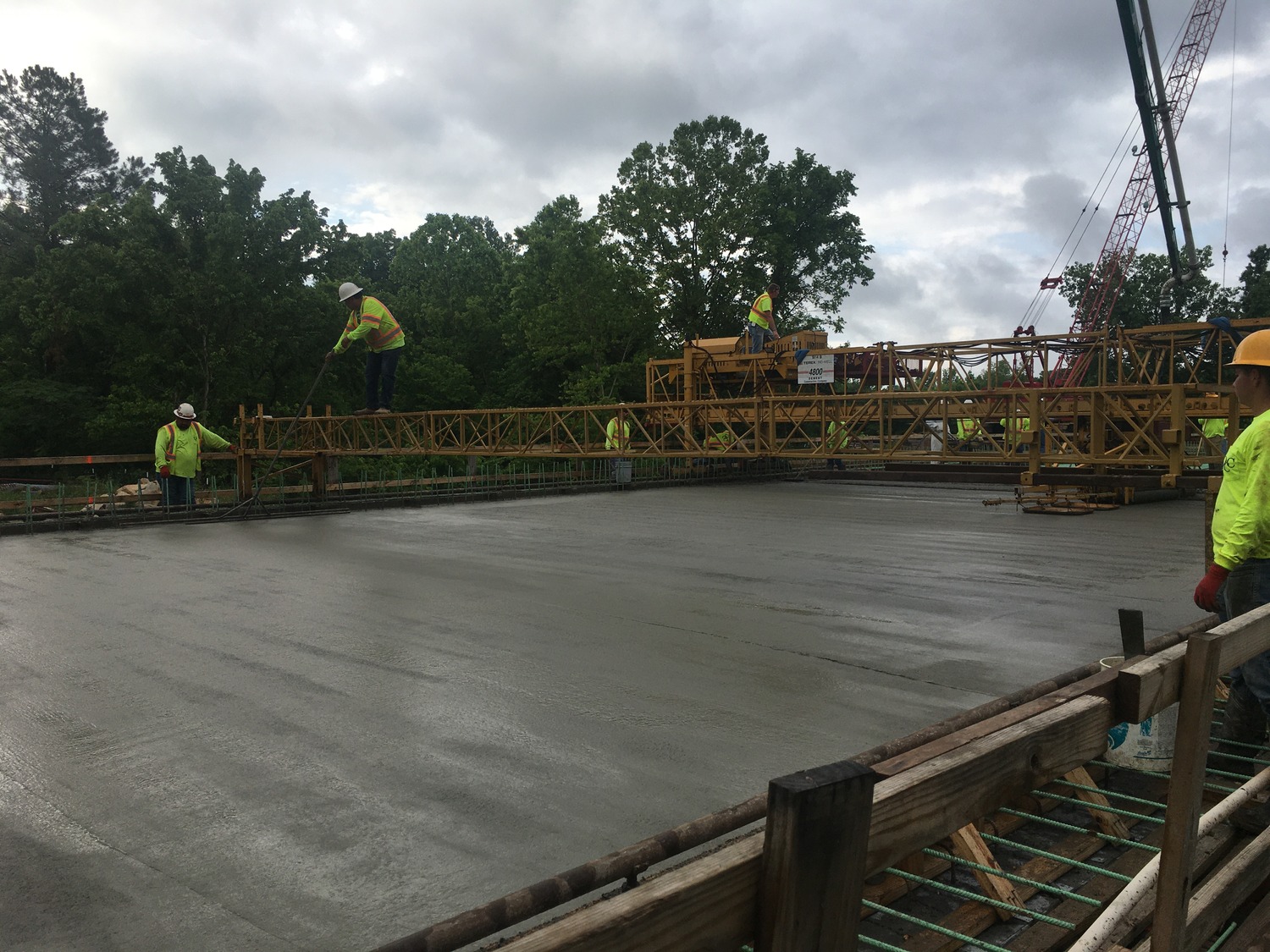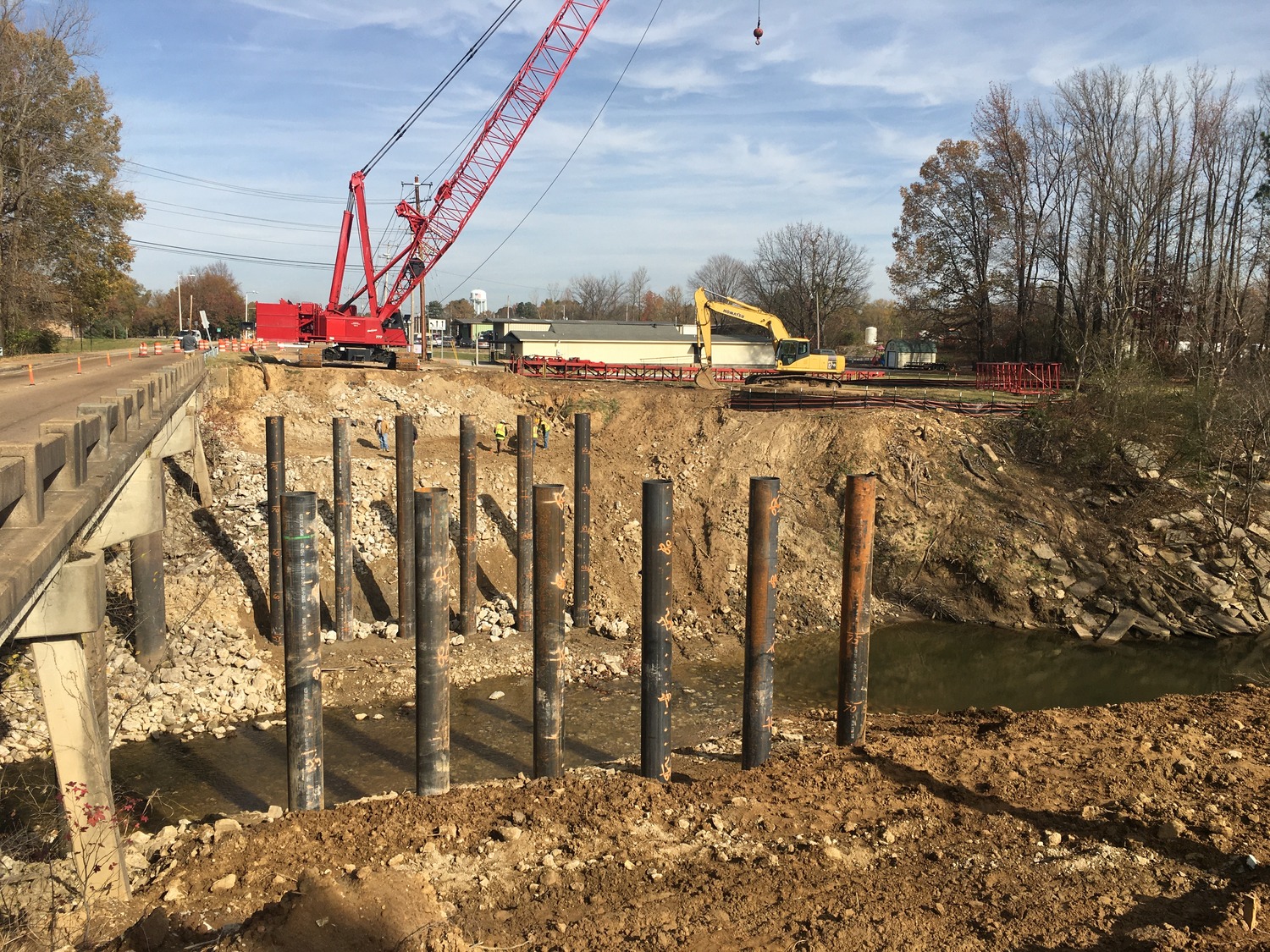A custom-designed bridge that connects the City Of Millington with the metropolitan area of Memphis.
The City of Millington is a growing community due to its proximity to the larger, metropolitan City of Memphis. The cities are connected by Raleigh-Millington Road which is a large arterial road that leads directly to State Route 385. Due to the high rate of commuter use, the two-way highway frequently experienced bottlenecked traffic on the bridge. Our team of civil site, structural, transportation design, and construction engineering inspection (CEI) professionals supported the City in creating a more streamlined design for the bridge.
Originally two bridges that were side by side with two lanes each, the crossing was converted to a five-lane bridge with extra wide shoulders for bike lanes and sidewalks. The width of the bridge can also accommodate additional lanes in the future if needed. The project was completed in multiple phases as the bridge serves as the direct route from Millington to Memphis and could not be shut down completely. At least one lane was kept open at all times to progress the flow of traffic during construction. Our transportation design team has a strong working relationship with the City of Millington and worked directly with the owner to coordinate this phasing and move the project through TDOT Local Programs. We also provided CEI services to make sure the construction phasing went smoothly without major traffic flow disruption.
The structure crosses Big Creek, which has a stormwater runoff drainage basin that stretches 70 square miles. We obtained a HEC-RAS hydraulic model from the Federal Emergency Management Agency and modified the model to include new survey data at the proposed crossing. We then modeled the proposed bridge geometry to show the overall effect of the project on adjacent flood elevations. The river dictated the design of the structure, particularly in the placement of the support beams. A high water level meant the beam depth could not go beneath a certain elevation, meanwhile the floor of the bridge needed to be high enough to avoid debris in the water, such as tree branches. The beams were formed as low profile square structures, a unique decision not standard in bridge design. Our structural engineers designed these beams specially for the project and were able to tighten the beam spacing to reduce the load on each.
We were able to complete this custom design on the structure because of our extensive experience in bridge design and longstanding, trust-based relationship with the City of Millington. Our local presence in the Millington and Memphis area led to a seamless integration into the project team and a successful design and construction that met all parameters and opened the flow of traffic on the route.






